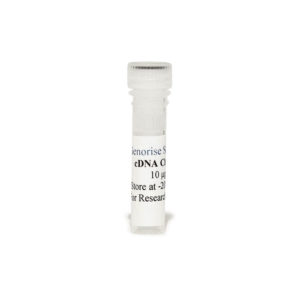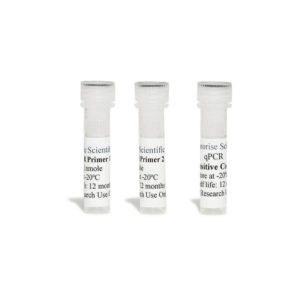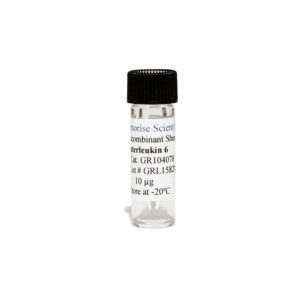Recombinant Porcine TNFRII Protein
$99.00 – $456.00
The recombinant porcine TNFRII protein is derived from in vivo expression of porcine TNFRII gene in E. coli and purified using his-tag affinity column and can be used in multiple applications such as cell culture, ELISA and western blot.
Alternative names for TNFRII: tumor necrosis factor receptor II
This product is for Laboratory Research Use Only not for diagnostic and therapeutic purposes or any other purposes.
- Description
- Product Citations
- Reviews (0)
Description
Genorise Recombinant Porcine TNFRII Protein Summary
Alternative names for TNFRII: tumor necrosis factor receptor II
Alternative name for porcine: pig, swine
Product Specifications
| Purity | > 95%, by SDSPAGE under reducing conditions and visualized by silver stain. |
| Endotoxin Level | < 1.0 EU per 1 μg of the protein by the LAL method. |
| Activity | Measured by its ability to inhibit TNF-a mediated cytotoxicity in the L-929 mouse fibroblast cells in the presence of the metabolic inhibitor actinomycin D. Matthews N and Neale ML (1987) in Lymphokines and Interferons, A practical Approach. Clemens MJ et al. (eds): IRL Press. 221.
The ED50 for this effect is 0.2-0.6 µg/ml in the presence of 0.25 ng/ml of rhTNF-a. |
| Source | E. coli derived porcine TNFRII. |
| Accession # | NA |
| N-Terminal Sequence Analysis | Met |
| Amino Acid Sequence | aa24-aa206 |
| Predicted Molecular Mass | 20 kDa |
| SDS-PAGE | 20 kDa, reducing conditions |
Background:
A tumor necrosis factor receptor (TNFR), or death receptor, is a trimeric[2] cytokine receptor that binds tumor necrosis factors (TNF).[1] The receptor cooperates with an adaptor protein (such as TRADD, TRAF, RIP), which is important in determining the outcome of the response (e.g. apoptosis, inflammation). Because “TNF” is often used to describe TNF alpha, “TNFR” is often used to describe the receptors that bind to TNF alpha – namely, CD120. However, there are several other members of this family that bind to the other TNFs.[3][4] while all cell types studied express TNF RI, TNF RII expression is limited primarily to hematopoietic cells and cells of the immune system. Most of the biological function of TNF are mediated via TNF RI. Soluble forms of both TNF RI and TNF RII, generated as a result of proteolytic cleavage of the extracellular domain, have been detected in vivo in various fluids. The soluble TNF receptors can bind TNF with high affinity and function as TNF-antagonists. [3, 5-7]
Reference
- Banner DW, D’Arcy A, Janes W et al. (May 1993). Cell 73 (3): 431–45.
- Ashkenazi, A.; Dixit, VM (1998). Science 281 (5381): 1305–8.
- Locksley RM, Killeen N, Lenardo MJ (2001). Cell 104 (4): 487–501.
- Hehlgans T, Pfeffer K (2005). Immunology 115 (1): 1–20.
- Chen G & DV Goeddel (2002) Science 296: 1634.
- MacEwan DJ (2002) Cell Signal 14: 477.
- Feldmann M & RN Maini (2001) Annu. Rev. Immunol. 19:163.
Product Citations
Be the first to review “Recombinant Porcine TNFRII Protein”
You must be logged in to post a review.




























Reviews
There are no reviews yet.